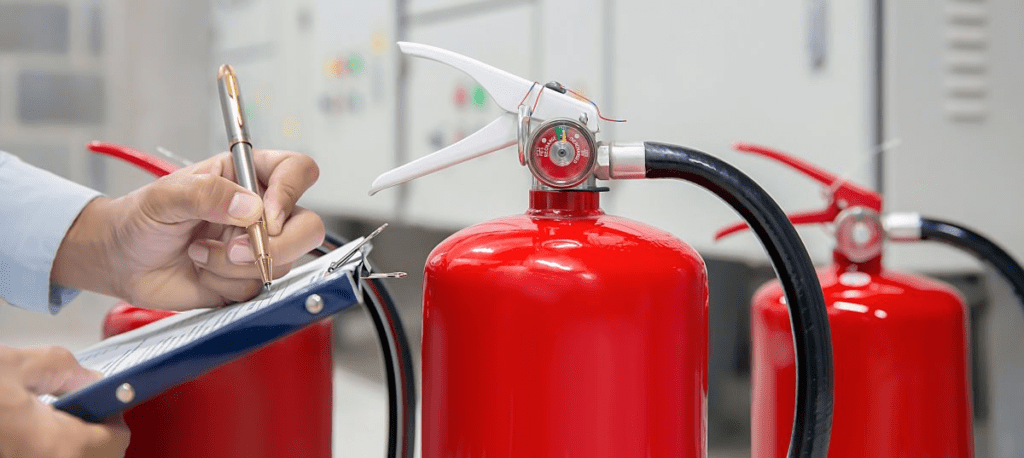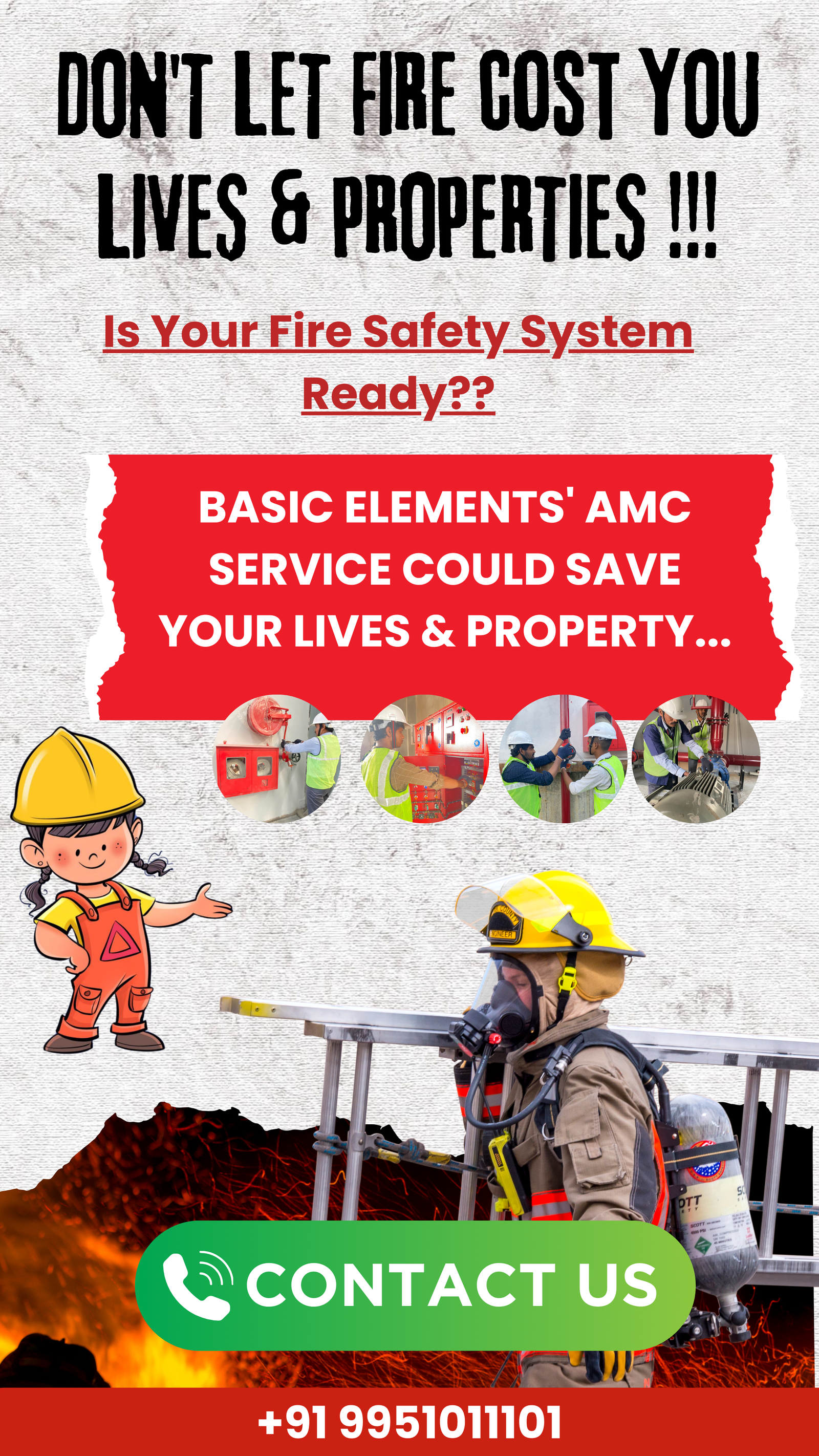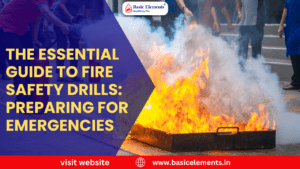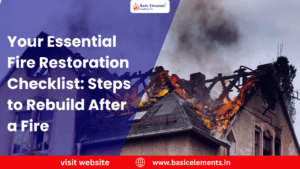Understanding the Different Types of Fire Extinguishers

Fire extinguishers are important safety tools that can help put out small fires before they become dangerous. There are different types of fire extinguishers, each designed to work on specific kinds of fires. Let’s look at the main types:
1. ABC Fire Extinguisher:
This is a versatile type that works on three classes of fires:
Class A: Ordinary materials like wood, paper, and cloth
Class B: Flammable liquids like gasoline and oil
Class C: Electrical fires
ABC extinguishers use a dry chemical powder to put out fires. They’re common in homes and offices.
2. CO2 Fire Extinguisher:
These use carbon dioxide gas to smother fires. They’re good for:
Class B: Flammable liquid fires
Class C: Electrical fires
CO2 extinguishers are often found in areas with sensitive equipment because they don’t leave residue.
3. Water Fire Extinguisher:
As the name suggests, these use water to cool and extinguish fires. They’re best for:
Class A: Fires involving ordinary combustibles
Water extinguishers should never be used on electrical or flammable liquid fires.
4. Dry Chemical Fire Extinguisher:
These are similar to ABC extinguishers but come in different types:
Multi-purpose dry chemical: Works on Class A, B, and C fires
Regular dry chemical: Works on Class B and C fires
Knowing which type of fire extinguisher to use is crucial for fire safety. Always check the label on an extinguisher to understand what types of fires it can handle.
How Fire Extinguishers Work and Their Intended Uses

Fire extinguishers work by removing one or more elements that a fire needs to burn. These elements are heat, fuel, oxygen, and chemical reactions. Here’s how different types of extinguishers work and what they’re used for:
1. How Fire Extinguishers Work:
Powder extinguishers: They release a fine powder that covers the fire, cutting off oxygen and stopping chemical reactions.
Foam extinguishers: They spray a foam that covers the fire, blocking oxygen and cooling the fuel.
CO2 extinguishers: They release carbon dioxide gas that pushes away oxygen from the fire.
Water extinguishers: They cool the burning material and remove heat from the fire.
2. Fire Extinguisher Uses:
Home safety: Keep in kitchens, garages, and near heating equipment.
Office buildings: Place in hallways, near exits, and in common areas.
Factories: Use in areas with machinery, chemicals, or flammable materials.
Vehicles: Carry small extinguishers in cars, trucks, and boats.
3. Extinguishing Different Fire Types:
Wood, paper, cloth fires: Use water or ABC powder extinguishers.
Flammable liquid fires: Use foam, CO2, or dry chemical extinguishers.
Electrical fires: Use CO2 or dry chemical extinguishers.
Cooking oil fires: Use special wet chemical extinguishers or fire blankets.
Remember, fire extinguishers are for small, contained fires only. For large fires, evacuate immediately and call the fire department. Always read the instructions on your fire extinguisher and know how to use it before an emergency happens.
The Benefits of Having Fire Extinguishers in Your Home or Workplace

Having fire extinguishers in your home or workplace is very important for safety. Here are the main benefits:
1. Quick Response to Fires:
You can put out small fires before they grow big.
This can stop a fire from spreading and causing more damage.
2. Saves Lives:
Fire extinguishers can give you time to escape safely.
They can help you clear a path if fire blocks your exit.
3. Protects Property:
Stopping a fire early can save your belongings.
It can prevent costly damage to buildings and equipment.
4. Reduces Smoke Damage:
Putting out a fire quickly means less smoke.
Less smoke means less damage to your things and less risk to your health.
5. Lowers Insurance Costs:
Some insurance companies offer lower rates if you have fire extinguishers.
This is because they know you’re better prepared to prevent big fires.
6. Increases Safety Awareness:
Having fire extinguishers reminds people to be careful about fire risks.
It encourages people to learn about fire safety.
7. Meets Legal Requirements:
Many workplaces must have fire extinguishers by law.
Having them helps you follow safety rules.
8. Provides Peace of Mind:
Knowing you have fire extinguishers can make you feel safer.
It’s comforting to know you’re prepared for emergencies.
Remember, while fire extinguishers are very helpful, they’re just one part of fire safety. You should also have smoke alarms, plan escape routes, and know when to call the fire department. Fire extinguishers are great for small fires, but for big fires, it’s best to get out quickly and call for help.
NFPA Standards and Regulations for Fire Extinguishers

The National Fire Protection Association (NFPA) sets important standards for fire extinguishers in the United States. These rules help keep people safe. Here are the key points about NFPA standards and regulations for fire extinguishers:
1. NFPA 10 Standard:
This is the main set of rules for portable fire extinguishers.
It covers how to choose, install, inspect, and maintain extinguishers.
2. Placement of Extinguishers:
Extinguishers must be easy to see and reach.
They should be near exits and spread out evenly in a building.
The maximum travel distance to an extinguisher depends on the fire hazard level.
3. Types of Extinguishers:
Buildings must have the right types of extinguishers for possible fire risks.
For example, kitchens need different extinguishers than office areas.
4. Inspections and Maintenance:
Extinguishers must be checked monthly to make sure they work.
They need a more detailed check every year by a trained person.
Some parts may need to be replaced or fixed over time.
5. Training:
People who might use the extinguishers should be trained.
This training should happen when they’re first installed and then every year.
6. Signs and Labels:
Extinguishers must have clear labels showing how to use them.
Signs should show where extinguishers are located in the building.
7. Documentation:
Records must be kept of all inspections and maintenance.
These records show that the extinguishers are being taken care of properly.
8. Recharging and Replacing:
Extinguishers must be recharged or replaced after use, even if only partly used.
They also need to be replaced or fixed if they’re damaged or too old.
Following these NFPA standards helps make sure fire extinguishers will work when needed. It’s important for building owners and managers to know these rules and follow them. This helps keep everyone safe and avoids problems with fire safety inspectors.
Proper Fire Extinguisher Inspection and Maintenance Checklist

Regular inspection and maintenance of fire extinguishers are crucial for ensuring they work properly when needed. Here’s a simple checklist for proper fire extinguisher inspection and maintenance:
Monthly Inspection (can be done by building staff):
1. Check location:
Is the extinguisher in its designated place?
Is it easily visible and accessible?
2. Examine pressure gauge:
Is the needle in the green zone?
3. Look for physical damage:
Are there any dents, leaks, or corrosion?
4. Check the safety seal:
Is the tamper seal intact?
5. Inspect the nozzle:
Is it clear of blockages?
6. Check the label:
Is it readable and facing outward?
7. Document the inspection:
Initial and date the inspection tag
Annual Maintenance (must be done by a certified professional):

- 1. Detailed external examination
- 2. Check internal parts and contents
- 3. Recharge or replace if needed
- 4. Perform hydrostatic testing if required
- 5. Update maintenance records
Five to Twelve Years Checks:
1. Internal inspection of the cylinder
2. Hydrostatic testing for pressurized water, carbon dioxide, and wet chemical extinguishers
Additional Tips:
Replace extinguishers that are damaged or outdated
Recharge immediately after any use, even partial use
Keep clear access to all extinguishers
Train staff on proper use and maintenance procedures
Remember, while monthly checks can be done in-house, annual maintenance and recharging must be performed by certified professionals. Regular care ensures your fire extinguishers will be ready when you need them most.








1 thought on “Fire Extinguishers: Your First Line of Defense Against Fires”
Pingback: The Importance of Carbon Monoxide Detectors 101: Protecting Your Home and Family - Basic Elements
Comments are closed.